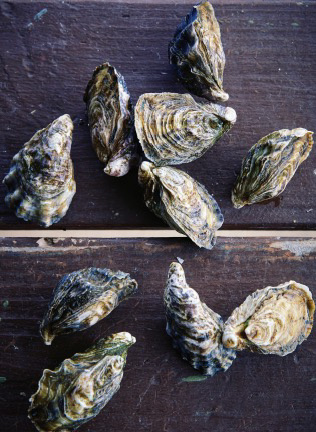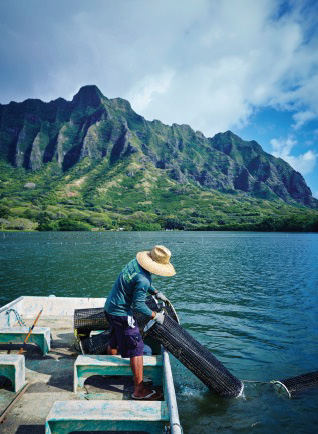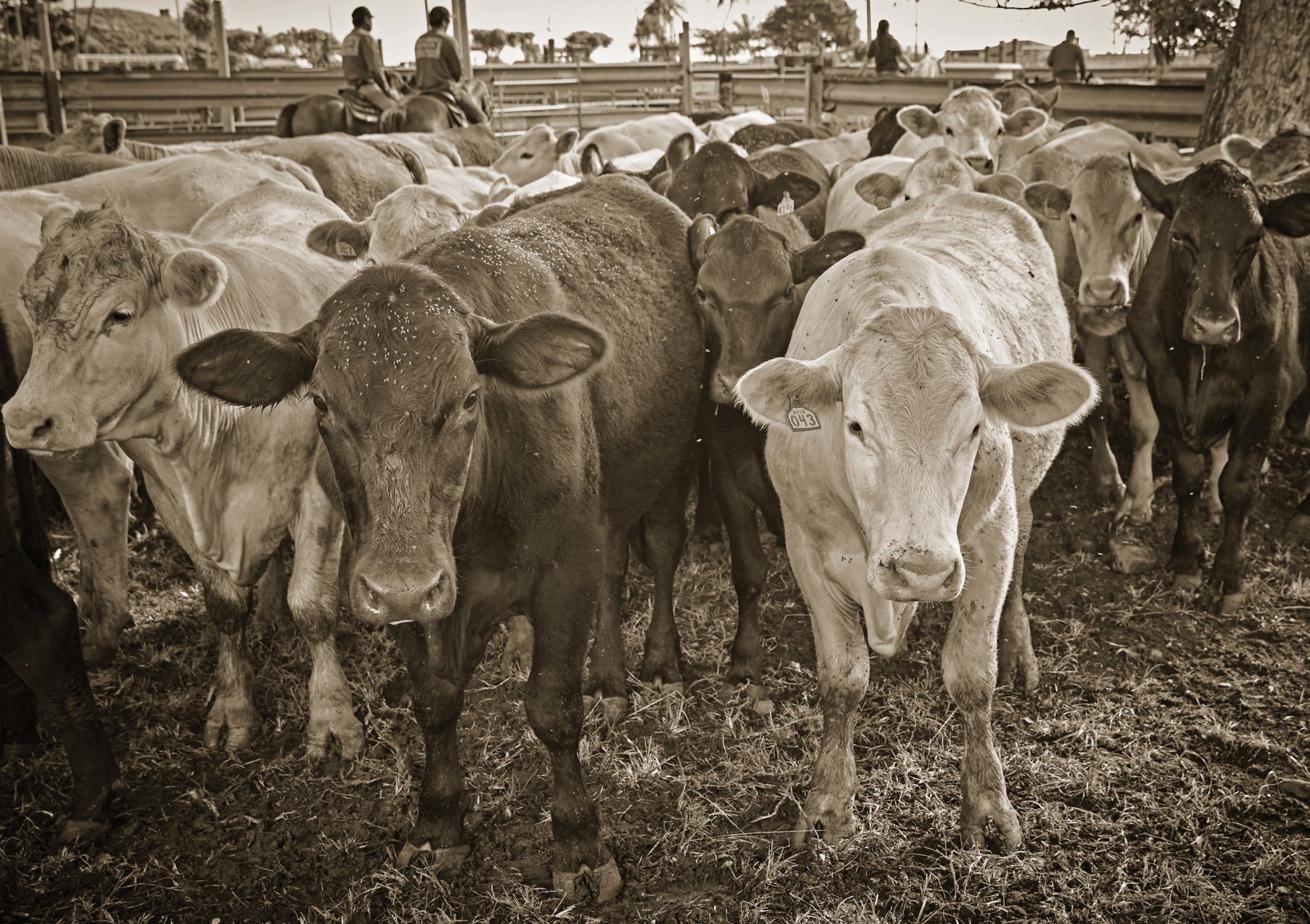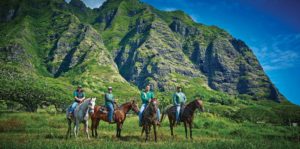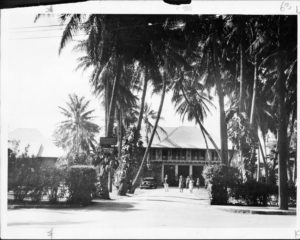Sustainable agriculture is a hot topic in Hawai‘i. There’s been a strong farm-to-fork movement in the islands for years, widely seen in award-winning restaurants supportive of local growers and fishermen. With farmers’ markets in every neighborhood and an abundance of fresh, healthful products that flourish in Hawai‘i’s climate, there has never been such enthusiasm for locally grown ingredients.
But while many think of the increased interest in a localicious movement as something born over the past two decades or so, Native Hawaiians were keenly aware of the relationship between longevity and their lands. Travel just a short distance from central Honolulu to O‘ahu’s Windward side and you’ll find evidence of ancient sustainable agriculture and ingenious fishing practices. At Kualoa Ranch, a 4,000-acre stretch of land dominated by high peaked mountains and spectacular coastline, there’s been sustainability and respect for the land for centuries.
For Hawaiians, Kualoa was one of the most cherished and sacred places on O‘ahu. A training ground for Hawaiian royalty, home to Hawaiian kings, and a place of refuge, Kualoa was revered as a magical place steeped in spiritual and agricultural history. With its stunning high ridge (Kualoa means “Long Back” in Hawaiian), lush green valleys and impressive mountain peaks, the ranch is home to, among other things, a herd of Angus-cross cattle, and deep into the valley of the ranch, centuries-old Hawaiian fishpond has been nurtured back to health by the breeding of some of the freshest tasting oysters in the world.
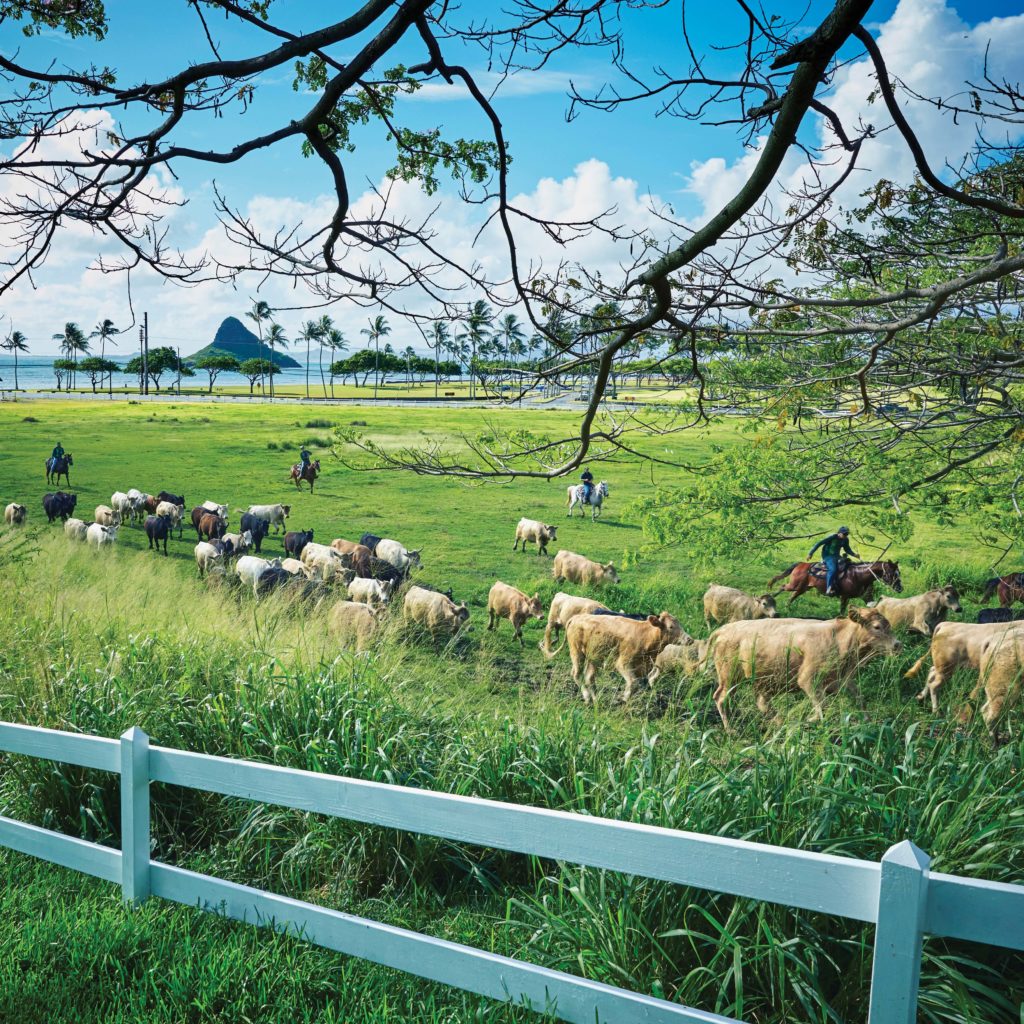
Ironically, Kualoa Ranch is known to millions as the Hollywood backdrop to movies and television shows like Jurassic Park and LOST, It’s also known as a place of adventure where zip line tours take guests deep into the trails and high above sheltered coastlines. But this connection between ancestors and the ‘aina, the ancient and the modern, is the driving force behind the farming methods at this impressive center of local agriculture.
With all-natural grass-fed beef, farm-raised shrimp, and free-range eggs, Kualoa Ranch quietly has established itself as a significant player in the sustainable food movement, and no better evidence can be found than in oysters farmed in the 800-year-old Moli‘i fishpond, where the ingenious methods first applied by Hawaiians have been revitalized with spectacular results. A 4,000-foot-long wall, constructed 800 years ago, isolates the pond’s body of water from the ocean. A freshwater source from the mountains flows into the pond, and the result is an estuarine environment that promotes a single cell algae bloom and a near-perfect environment, it seems, for oysters.
Maintaining the ancient fishpond and farming the oysters that flourish there is something oyster maiden Ku‘uipo McCartey takes very seriously.
“I feel that I am taking care of one of the most beautiful fishponds in Hawai‘i,” she says enthusiastically. “It’s something that we all take very seriously at Kualoa.”
I feel that I am taking care of one of the most beautiful fishponds in Hawai‘i
Ku‘uipo McCartey
Originally imported to feed on excess algae in the pond and maintain the health of the water, Kualoa oysters have become some of the most sought-after mollusks in Hawai‘I — with demand for the sweet, briny, Pacific triploids far exceeding supply.
Hawai‘i’s top chefs and restaurateurs, including Alan Wong (Alan Wong’s Restaurants) and Ed Kenney (Town, Mud Hen Water, Mahina, and Sons) clamor to serve the sweet-tasting oysters and marvel at their flavor. Similar to grapes that rely on terroir for their flavor, oysters, rely on “merroir,” explains McCartey, adding that a Kualoa Oyster will have a clean, fresh opening flavor and a sweet, almost briny aftertaste. The slight saltiness is due to a meticulous 48-hour purging process that results in succulent, clean, fresh oysters meticulously freed from grit or dirt.
Freshness is important when you live on an island, and essential if you’re part of an agricultural movement that provides all-natural grass-fed beef to a well-educated consumer who knows about the benefits of better beef. Much like the oysters, Kualoa’s high-quality, fresh meats are in high demand.
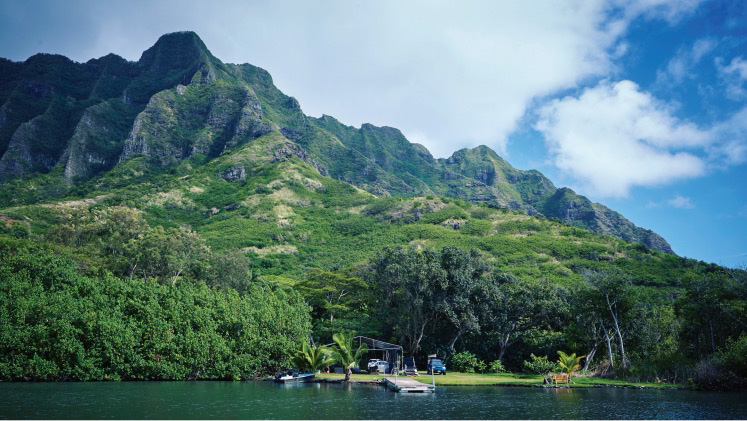
Ryan Schultz is Kualoa’s livestock manager. A third-generation rancher, he was born and raised on Hawai‘i island at his family’s Daleico Ranch, learning his trade from his father and his grandfather. In keeping with the ancient tradition that flows through Kualoa history, Schultz takes his responsibility for the land and the cattle seriously. He speaks of the strength of a legacy in farming. “I felt a sense of family obligation to continue what my grandfather started,” he says.
More than 600 cattle graze on almost 2,000 acres of stunning pasture, allowing Schultz and his team at Kualoa to manage both the grasslands and the herd, which consists of breeding cows, calves, steers, and bulls—all of them raised without steroids, hormones or antibiotics. And because the beef is processed on the island, there’s no fresher meat on the market.
“We literbally have the freshest, all-natural beef you can possibly find in Hawai’I
Ryan Schultz, Kualoa Livestock Manager
“Everything that’s harvested from the ranch is marketed directly back to the consumer in the least amount of time.”
Between gentle grazing habits and a quick harvest time, Kualoa Beef sets the bar for locally farmed meats. Currently, the ranch is the only wholesaler of its products, and faithful consumers place orders weekly on the ranch website, choosing from cuts of meat that include rib eye, tenderloin, New York steak, top sirloin roast, chuck steak, flank steak, short ribs, beef stew cut and ground beef. The ranch even marinates its own teriyaki beef and barbecue-style ribs. “Local people know that our beef is the freshest they can find,” Schultz explains. “And it’s important to them that the cattle never leave the island.”
It still may be shrouded in ancient history and revered as a sacred space, but Kualoa Ranch, under the stewardship of the Morgan family and its committed staff, is as relevant today as it was centuries ago.

